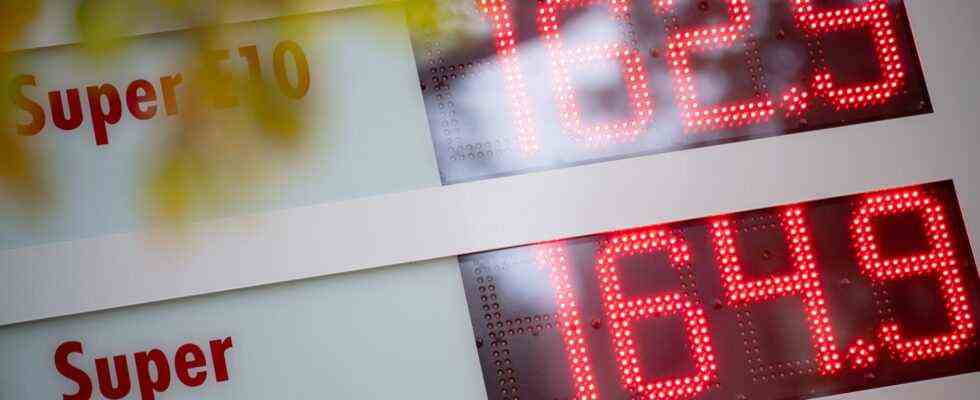Status: 11/29/2021 2:19 p.m.
The rate of inflation in Germany rose to its highest level in almost 30 years in November. According to an initial estimate, consumer prices were 5.2 percent above the previous year’s level – mainly because of energy costs.
For the first time in more than 29 years, the German inflation rate rose above the five percent mark in November. Goods and services cost 5.2 percent more than a year earlier, as the Federal Statistical Office announced in an initial estimate.
The last time there was a higher value during the reunification boom in June 1992 was 5.8 percent. Expensive energy was the main reason for the renewed price hike. In October the inflation rate was 4.5 percent, in September it was 4.1 percent.
Food is also significantly more expensive
According to statisticians, energy cost 22.1 percent more in November than a year earlier. Food prices rose by 4.5 percent. The prices of services rose by 2.8 percent, and apartment rents rose by 1.4 percent. According to Commerzbank chief economist Jörg Krämer, “prices are now increasing on a broader front, it is no longer just about energy and some goods particularly affected by Corona”.
ECB director Isabel Schnabel expects lower values again in the future. “We assume that the peak of inflation development will be reached in November,” she said in the ZDF. In 2022, the rate of inflation will probably gradually decrease again towards two percent, the target of the European Central Bank (ECB).
Special effects such as the temporary VAT cut last year would then be excluded from the statistics. “Energy prices will not continue to rise at the same rate either,” said Schnabel. The pandemic-related supply bottlenecks in the economy should also gradually resolve.
No ECB rate hike in sight yet
If inflation remains at a level above two percent, the central bank will react decisively, said the ECB director. “But at the moment it would be a mistake to raise interest rates early and thus slow down the upswing, because that would essentially lead to increased unemployment and would not be able to change anything about the current very, very high inflation.”
According to experts, it now also depends on the further development of wages whether the inflation trend solidifies. Some economists fear a spiral of sharply rising prices and wages. The latest collective bargaining agreement for the public service is already an indication of a “gentle wage-price spiral”, said ING chief economist Carsten Brzeski – “a spiral that will continue beyond 2022”. However, this development does not have to be bad as long as the situation stabilizes again in 2023. On the other hand, Holger Schmieding, chief economist at Berenberg Bank, said: “This deal will not start a wage-price spiral.”
“No excessive wage agreements”
The around 1.1 million collective bargaining employees in the federal states receive 2.8 percent more money and a tax-free corona bonus of 1,300 euros. Calculated over the year, the deal remains well below the central bank’s two percent target, said Sebastian Dullien from the union-affiliated IMK Institute. “This means that there is no inflationary pressure from wage costs. In other European countries, too, there is currently no sign of excessive wage agreements.”
In the 1970s, a dramatic price shock in the oil markets set in motion a wage-price spiral. Rising prices led to higher wage claims and wages, which in turn led to further price increases. Only courageous intervention by major international central banks to raise interest rates ended the strong inflation. For example, the then US Federal Reserve Chairman Paul Volcker raised the key rate to 15 percent in the early 1980s.
Prices keep rising – who does it hit the most?
Bianca von der Au, ARD Stock Exchange Studio Frankfurt, November 29, 2021 3:31 p.m.

